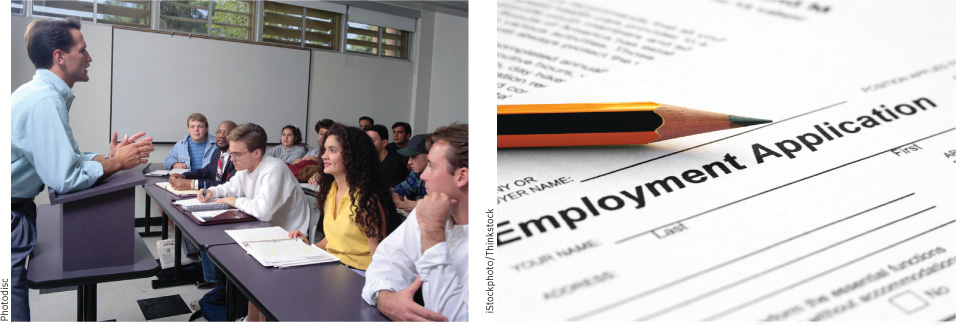Decision Making by Individuals and Firms
9
Why good decision making begins with accurately defining costs and benefits
The importance of implicit as well as explicit costs in decision making
The difference between accounting profit and economic profit, and why economic profit is the correct basis for decisions
Why there are three different types of economic decisions: “either–
or” decisions, “how much” decisions, and decisions involving sunk costs The principles of decision making that correspond to each type of economic decision
Why people sometimes behave irrationally in predictable ways
GOING BACK TO SCHOOL

HOW WOULD YOU HANDLE losing your job after 24 years? For its August 2009 article “Recession refugees go back to school,” the Financial Post interviewed “Maria” (her real name was withheld) on how she managed in such a situation. After more than two decades at a large Canadian bank, Maria was laid off in February 2009 during the depth of the recession. As the article noted, “She knew opportunities in financial services were scarce, so after talking to a friend who had switched careers mid-
Maria was far from alone in her decision. In the spring of 2009 and again in 2010, colleges and universities across the country were reporting a record number of applications. Applications soared not just for bachelor and community college programs; they also soared for graduate and continuing education programs of all sorts.
Why did so many people make a similar choice in the spring of 2009 and again in 2010? We’ll answer that question shortly. Before we do, note that every year millions of people—
This chapter is about the economics of making decisions: how to make a decision that results in the best possible economic outcome. Economists have formulated principles of decision making that lead to the best possible—
We’ll start by examining three different types of economic decisions. For each of these types, there is a corresponding principle, or method, of decision making that leads to the best possible economic outcome. In this chapter, we’ll see why economists consider decision making to be the very essence of microeconomics.
Despite the fact that people should use the principles of economic decision making to achieve the best possible economic outcome, they sometimes fail to do so. In other words, people are not always rational when making decisions. For example, a shopper driving around in pursuit of a bargain may knowingly spend more on gasoline than he or she saves on the discounted item. Yet economists have also discovered that people are frequently irrational in predictable ways. In this chapter, we’ll learn about these tendencies when we discuss behavioural economics, the branch of economics that studies predictably irrational economic behaviour.